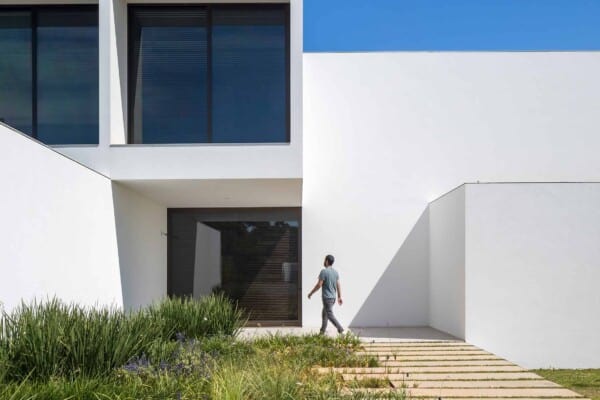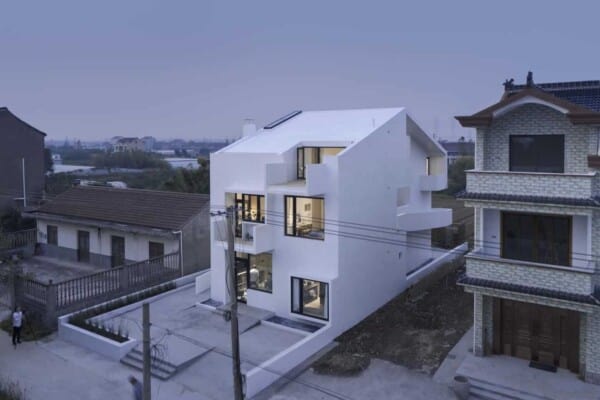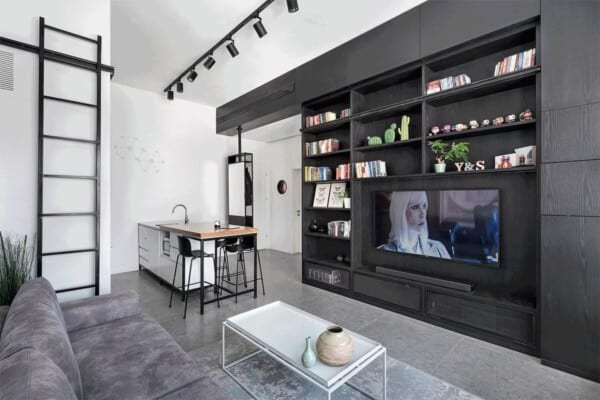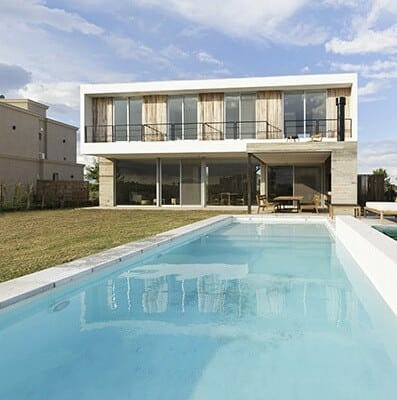147 Laidley was designed and built by the Architect owners, Jim Zack and Lise de Vito, and they now occupy it along with their two children.
This contemporary single family residence is located on a typical 25 ft x 100 ft San Francisco infill lot.
With just over 3,000 sq ft, three + bedrooms, three bathrooms and an open plan living floor with dramatic views of the City, the Bay and the Bay Bridge, this urban house is beautifully executed.
The Laidley House by Zack|de Vito Architecture:
“This ground-up single-family residence peers over a steep downhill slope where views of the City and Bay are omnipresent. The owners, a family of four, were both architect and builder. The goal of the project was to create a modern, eco-sensitive, urban retreat that was kid tough and kid friendly, but didn’t compromise on design. The open plan is rationally composed of two side-by-side volumes, the larger volume sliding past the smaller, pushing out toward the view on three levels. The secondary volume is shorter, creating a three story, south facing notch allowing light, air and more views to penetrate the building.
The volumetric push/pull creates a hierarchy on the building facades, expressing interior functions, and providing covered areas at key entry points. Two boxes, echoing traditional bays, project from the front façade; one a steel and acrylic balcony, the other an oversized steel and glass bay-containing window seat.
The rear, view side of the house is broken down with projecting balconies and capped with a sloping roof, projecting out from the living room. Steel channels structurally and visually connect the balconies and roof projection to the main stucco volume.
Entry into the house is directly off of street level where an open, translucent staircase flows up or down and floods the three levels with natural light from a large, operable skylight above. The house is broken down programmatically by floor. The public spaces of the kitchen, dining room, living room and studies are on the upper floor. Separation of the formal public spaces is blurred, opening the floor to views and creating a multi-functional, family friendly space.
The living room drops three steps, separated by a low cabinet, creating a more dynamic spatially volume. Below the entry level is the master suite. A graphic row of cabinetry opens the “closet” into the room resulting in a long, dramatic space again open to the views. Down one more level is the kid’s floor with a large family room, two bedrooms and a bathroom. Deck and yard are accessed from this level, drawing in more light and views.
Using a consistent palette of materials and detailing, the project is an expression of contemporary craft. Visible structural steel and wood cabinetry are used throughout the house, graphically defining or dividing spaces. Materials, details and connections are visible expressions of the design and construction. This is exemplified in the intricate staircase where water jet-cut steel stringers support translucent acrylic treads and risers.
The house was designed and built using sustainable design principles. Energy efficiency, low consumption and low toxicity were key ideas. A panelized framing system was used with 80% of the framing built off-site, delivered and craned into place, reducing waste and on-site construction time.
Materials used include high fly ash concrete, engineered lumber, blown-in cellulose insulation, FSC certified woods, palm wood flooring low VOC finishes, etc. A photo voltaic system provides nearly 100% of the required electricity and solar hot water panels reduce heating loads for the hydronic radiant heat and domestic hot water.”
Photos by: Bruce Damonte













































